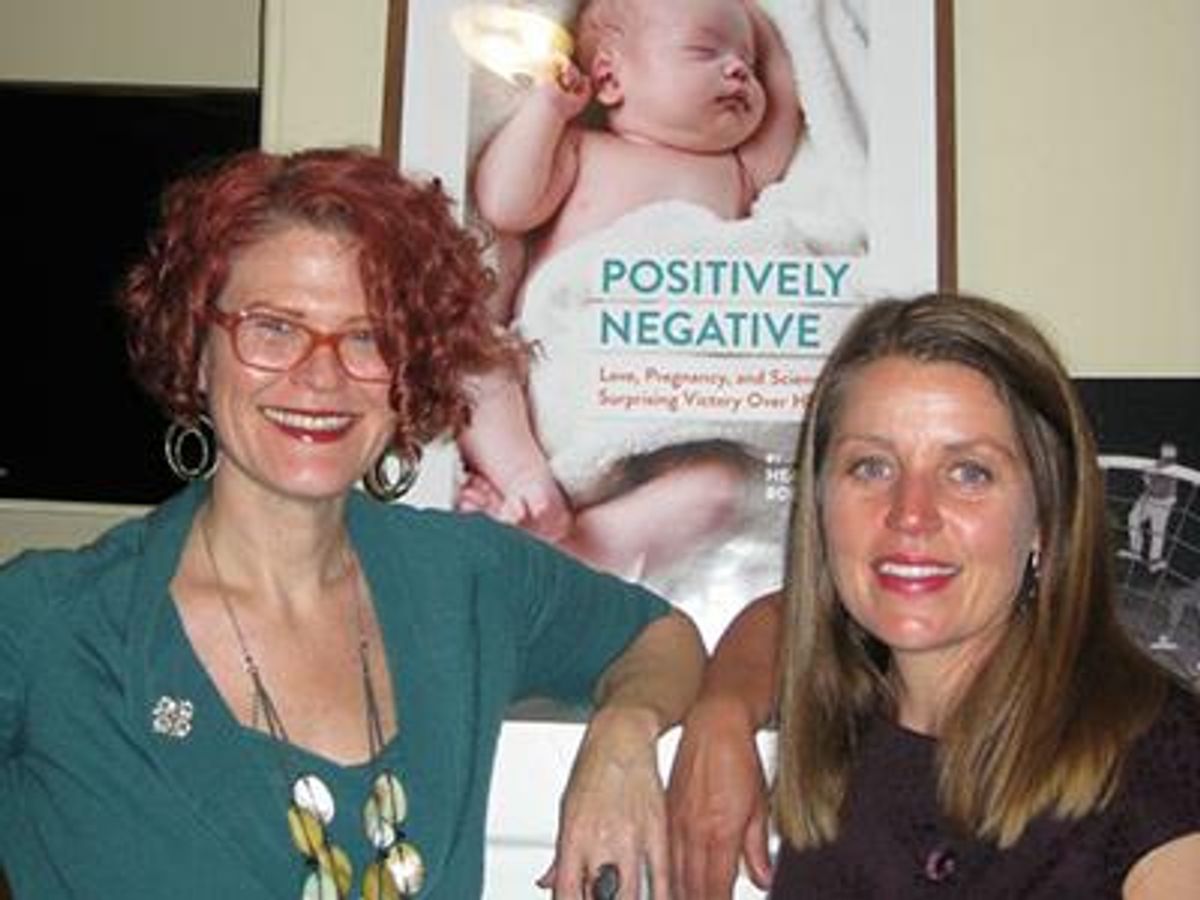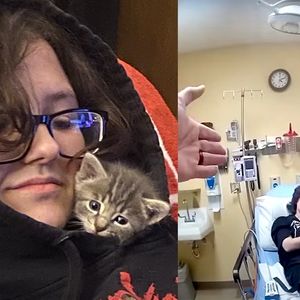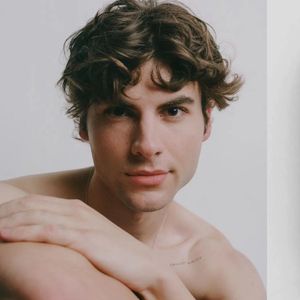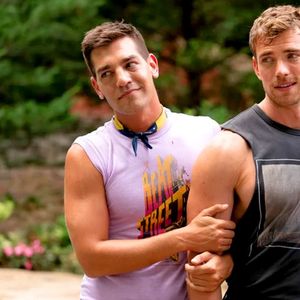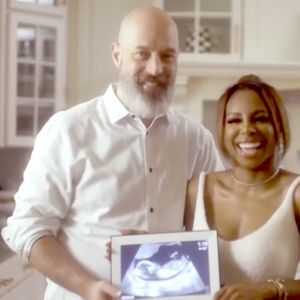Last year Heather Boerner self-published Positively Negative: Love, Pregnancy, and Science's Surprising Victory Over HIV, the real life story about two sero-discordant couples who conceive through sexual intercourse without a condom. The women remained negative and their children were born HIV-negative as well. (The couples were Dan Hartmann and Susan Slingluff Hartmann and Poppy and Ted Morgan.)
Their story — and the stories of others like them — are proving that being HIV positive isn't a barrier to becoming a parent of a healthy child.
We asked Boener to count down her top 12 moments in the last year since the book was published.
12: Getting Caped
When I showed up to a pop-up exhibit of photography by HIV-affected families from San Francisco General Hospital, I did not expect for Shannon Weber, whom I quote in the book and who first introduced me to Poppy, one of the women in my book, to announce to the assembled crowd that she likes to "cape" people who are doing good work with HIV. Then she said things that were so kind toward me and Positively Negative that I've mostly blocked them out. But suffice to say, I took the cape and the compliments with gratitude.
11. #HIVLoveWins
When Positively Negative launched, and even before, I was in conversation with people on Twitter (my handle is @HeatherBoerner) about what love for HIV-affected couples means, and how that love translates to families. This resulted in some Twitter chats, which we followed with the hashtag #HIVLoveWins. Maybe it's more accurate to say #HIVScience+LoveWins, but it's all the same. I was blown away by the people who showed up to talk — people from as far away as South Africa. Old and new friends made this not just about the book, but about what it's like to live and love with HIV today. The best compliment I heard about the chat…well, actually there were two. First, a colleague of mine said the chat felt more like a chat than any other Twitter chat she'd attended. Given the Wild West nature of Twitter, that was high praise. But more important to me was that I learned, through Poppy, that Ted was so energized by the chat that it made him open to doing more press and, eventually, to talking to me for the book after previously declined.
10. Book Readings
It's a special (and, I’m not gonna lie, nerve-wracking) experience standing in front of a room of people and reading the words that have, so far, only been sounded out in my head or in the privacy of my home office. So when I got a chance to read for the people at the photography pop-up, and then, after the book's publication, at Shannon Weber's house, it was scary. But also amazing. In Shannon's lovely San Francisco apartment, prominent researchers (including UCSF's Bob Grant, lead investigator of the ground-breaking iPrEx study), Poppy, Caroline, folks from the larger San Francisco HIV community, and my own friends and colleagues all gathered. (Watch our video of Shannon Weber talking about PrEP and the iPrEx study here.)
I did a reading of pieces from Positively Negative, but the most powerful moments came when Caroline, Shannon, and Poppy read the parts of the story that were most poignant to them. When Poppy passed around the birth announcement for her daughter, and then started crying when reading the section about her positive pregnancy test, it moved the whole room. It was moving beyond what I can say.
9. AIDS Walk SF
Just before the book was published, Caroline, Shannon and I got the great idea to create a Positively Negative AIDS Walk Team. Yes, this is self-promotion, but it turned in to a good cause, too. It turned out, when Caroline talked to the AIDS Walk staff, she was able to get the UCSF Bay Area Perinatal AIDS Center (BAPAC) assigned as one of the benefiting organizations. And because of that, some of the money raised by the walk (and by us!) went back to giving HIV-affected family access to all the parenthood options available to them. Plus, Caroline got to represent BAPAC (and HIV-affected families everywhere) by speaking at the beginning of the walk. I'll admit, I am not in good enough shape for all this. But we had a fantastic time. Shannon's daughter Taft was a champ, handing out Positively Negative postcards to all the families around us. There be video of us dancing around as we warmed up before the walk, which I could be convinced to share if you ask nicely.
8. We Got Reviews, Actual Reviews
When a book is published, it goes out into the void and, as an author, you never know if it's landing. That's why the amazing reviews Positively Negative has received, both from readers and bloggers, have been so heartening to me.
First, the World Science Festival declared Positively Negative a "smart read." Then, blogger Mayra Bitsko called the overlapping structure of the book, juxtaposing the parenthood journeys of the Morgans and the Hartmanns with the researchers who were investigating the plausibility of condomless sex for these couples "phenomenal," writing that "[Boerner's] HIV medical research opens your eyes to new possibilities, hope, and the continuous fight to stop stigma. I highly recommend this compelling page-turner to everyone." The well-read science, culture, and history blog NursingClio, featured Positively Negative, and really got it, saying:
"To me, though, the real lesson here is that public health and medical establishments move slowly, and people’s whole lives can be spent struggling in the gap between innovation and implementation. As a society, when it came to HIV and childbearing, we did not let couples make their own decisions and take their own risks. We did not really take infertility seriously, as a potentially devastating condition. We made it impossible for couples to decide that a small risk of HIV transmission was worth the possibility of building a family together. And we left those couples dangling for almost two decades, too long for many of them to ever bear children. In the future, will we do better in recognizing fertility and reproductive decision-making as a critical element ofreproductive justice? Might we find a way to accommodate individuals’ thoughtful decisions about risk-taking, rather than making their decisions for them?"
And just recently, the Adoption Blog at Psychology Today featured a Q&A with me, (read the full interview here) allowing me to explore something I don't explore much in the book: adoption options for HIV-affected couples.
Nurse-turned-health journalist Marijke Durning not only reviewed the book (calling it "well written, well researched and worth your time"), she asked to do a Q&A with me about the role of HIV (the idea of it vs. the reality) as a character in the book, and who I thought would benefit most from the book. And the book also got a positive nod from the My PrEP Experience blog.
Flattering? You betcha. But it's more important for the sake of the couples who will be helped by the news getting out there. That's the point of all this. The more people who hear about the book, the more likely it is to reach the people who need it.
7. Using Positively Negative to Report the New Era of HIV
I had no idea when I started writing this piece that it would coincide with a focus on biomedical HIV prevention. Obviously I knew about the FDA's Truvada approval: but I didn't know that [PrEP] would be the story of the year for HIV. (Read The Advocate's month-long special coverage on PrEP here.)
This became a great opportunity to promote Positively Negative through news stories that drew the attention of the people who might need the technology most. First, I did a story on how Truvada offers the first woman-controlled HIV prevention option, for BETABlog, the publication of the San Francisco AIDS Foundation.
Then I did a story for The Star-Ledger in New Jersey, in which I got to talk to exactly the kind of woman who needs HIV protection the most: A straight, African-American woman, dating in a community with an extremely high level of uncontrolled and undiagnosed HIV, who found out her longtime boyfriend was positive. Her sister had died of complications to AIDS. She knew what a grisly death it could be. “No matter who you love, what situation you’re going through or who you’re with, it’s always going to be you,” she told me. “PrEP is excellent for saving your life. It’s saving my life. I believe that.”
It really pointed out a huge blind spot in the book, the fact that both couples in it are white. More and more, HIV is a Southern, African-American epidemic (read HIV Plus' special report on the epidemic ravaging the American South here). As I work on updating the book, I'm going to work to incorporate a more balanced view into it.
And then there was the story I wrote for The Daily Beaston women and HIV prevention (which was then referred to in a story on the same topic on TakePart). The word is getting out.
6. More Research Shows That Truvada is Safe for Pregnant Women
When I wrote Positively Negative I didn't think of it as only or even primarily about Truvada and pre-exposure prophylaxis (PrEP). To me, the book and this moment is about choices and options. In fact, what I came to believe during the reporting and writing process was that PrEP is not necessary for many couples like the Hartmanns and even the Morgans— couples where the HIV-positive partner's viral load is fully suppressed. However, that's the moment we're in, as people get their mind around another option besides condoms. So I was delighted to get to write for BETAblog about some new research that continues to show that women who take Truvada for PrEP (as opposed to HIV-positive women who have been taking Truvada during pregnancy for years) are no more likely to see birth defects in their babies than women who don't. The science is nascent on women who don't have the virus, but it's exciting to see the science roll in. I'll be monitoring this and adding this to Positively Negative as the news evolves.
5. Japan Calling
The best part of the crowdfunding campaign, by far, was connecting with the readers, the advocates and the people for whom this issue is close to your heart. So I was moved when one of you gave $200 for the chance to speak to me on the phone. I won't go into the details of the call, because I told the caller I wouldn't. But suffice to say that through that call I discovered what a lifeline Positively Negative could be for couples who are isolated, getting contradictory or even stigmatizing advice from their healthcare providers, and don't know where else to turn. You are who I wrote this book for. I'm so glad I got to talk to you.
4. The Washington Post
I have to include this in the list of highs from this year because it's a professional high for me, and without Positively Negative I never would have gotten to do it. In addition to adding "author" to my title, this year, I got to add The Washington Post to my credentials. In support of the book, I pitched a story to the editor there about how local governments were stepping up to turn PrEP from a policy to an accessible option. The story itself featured an African-American man, not a woman, but it was a moving piece for me, especially the trust Nick, the man I featured, placed in me. The story got some flack from activists for the headline. If only [the Washington Post editors] had added "yet" to the end of the headline — "The World's Most Effective HIV Prevention Drug Hasn't Lived Up to Its Potential, Yet" —I think it would have been more accurate.
3. The Morgans' and the Hartmanns' Stories Get Deserved Attention
When I started this story, I knew the Hartmanns had been interviewed before. After all, that's how I met them: I interviewed them for a story on parenthood options for HIV-affected families. But when I started what turned in to Positively Negative, I had no idea how their stories would resonate outside the book. This year has seen a story featuring the Hartmanns' condomless conception in the Washington Post and a segment by CNN's Sanjay Gupta.
The Morgans, meanwhile, really went with the pseudonym I chose for them, and allowed themselves to be filmed (I'm so proud of them!) for a Dutch film crew (I spoke to the reporter, and he told me they are considered the Dutch equivalent of 60 Minutes). And later, an interview they did with Fusion went live. I've always said this is their story, not mine. I just hope that they feel I've done their story justice.
2. Positively Negative Was Excerpted on The Atlantic
This is where it all started. In the Fall of 2012, I got an assignment from The Atlantic's Health channel to write about pregnancy for HIV-affected couples. That spiraled into a 10,000-word article that was too long for their pages. After much thought and focus, I decided that, rather than cut the piece from 9,000 words to 6,000 words, I would publish it myself. And so it was gratifying when I approached The Atlantic about running an excerpt and they whole-heartedly agreed. The excerpt, "Getting Pregnant When One Partner Has HIV," tells just a piece of Poppy and Ted's story. I hope it whet people's appetites for the full story. For me, it was a professional honor.
1. Publishing Positively Negative
Maybe this seems anticlimactic after everything I've listed, but I'm here to tell you that this is the biggest deal of all. When I was raising funds for the book, I set Valentine's Day as the release date for the book, at least in my head. How hard could it be? I thought. I'd already done the heavy lifting. The draft was done, and I loved it.
But Valentine's Day turned in to March 10 for National Women and Girls HIV/AIDS Awareness Day, and then I stopped setting deadlines. The hard work of editing, and then fact-checking were, in fact, work. Figuring out the format and contemplating images and hiring graphic designers and other professionals on my own dime followed. There were dark nights of the soul in there. I often wondered if I'd made a mistake. Publishing with The Atlantic certainly would have been easier, though I don't believe it would have served the story nearly as well.
When I finally told my colleague and consultant Damon Brown that I was ready to publish, he congratulated me. "Most people don't ever do this," he told me. "You should be really, really proud."
And you know? I am. I am enormously proud of this piece of journalism and the courage and generosity of all my sources. It shouldn't take courage to talk about wanting to have a child, but the fact that it does shows how far we still have to go to bring the culture up to date with the science. I am hopeful we will get there, and I hope Positively Negative contributes to steps in that direction.
Stay tuned: You can read an excerpt of the book in the upcoming May/June 2015 issue of HIV Plus.
All photos courtesy of Heather Boerner
